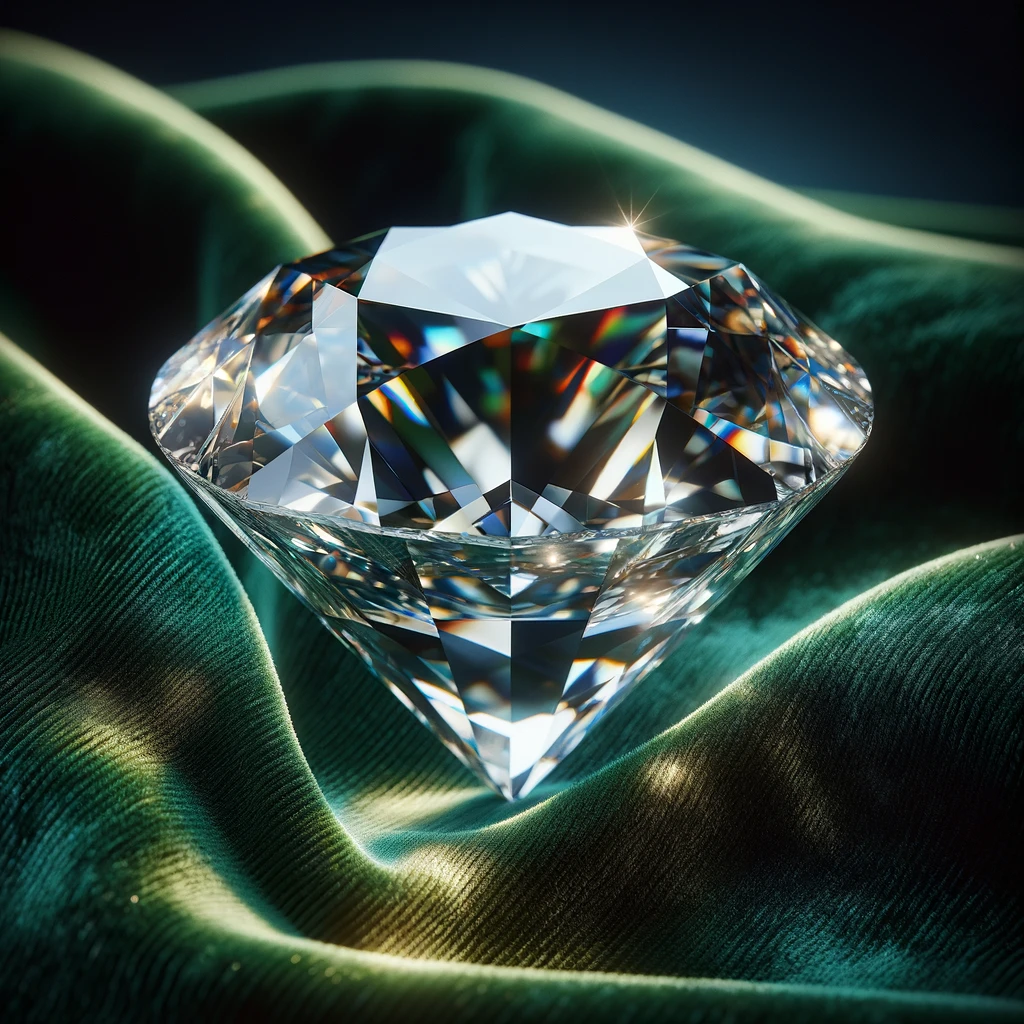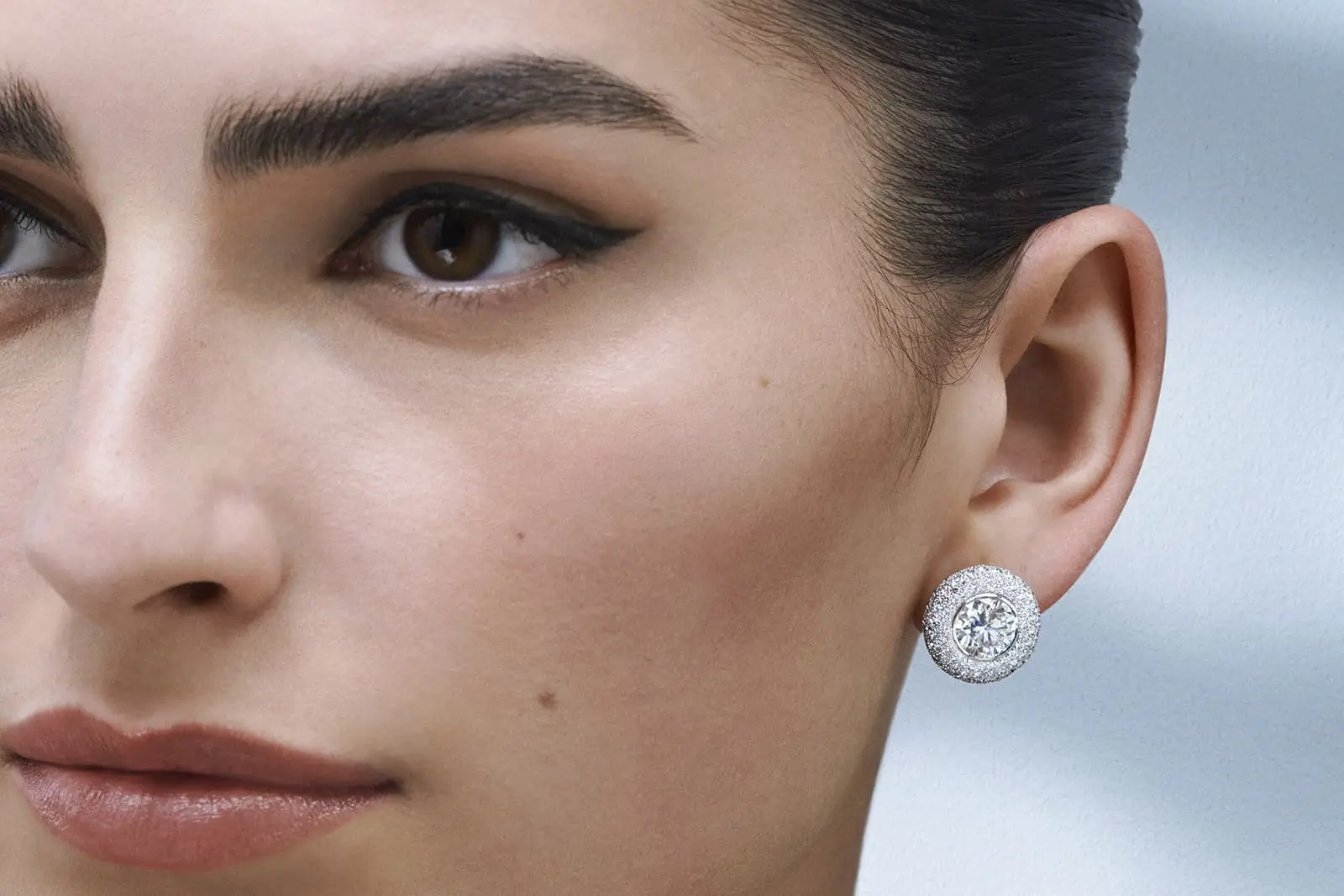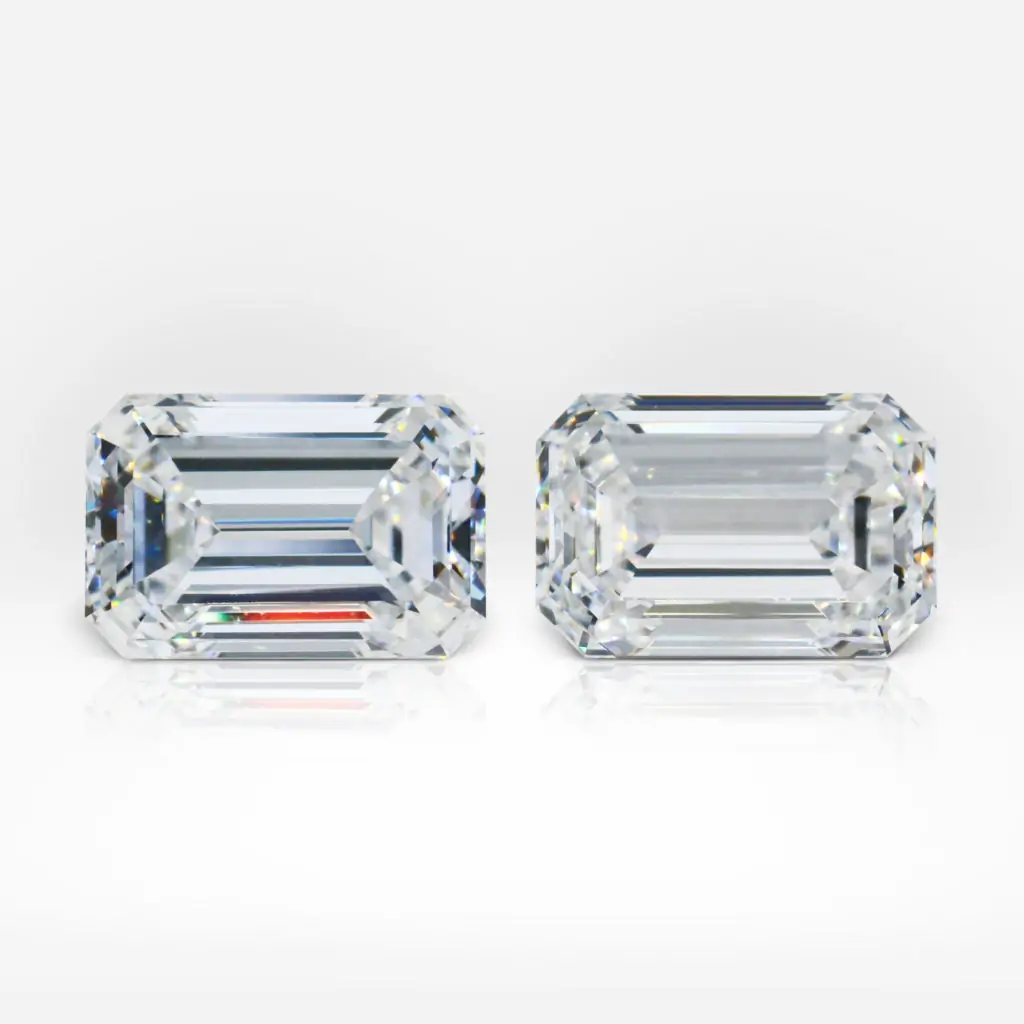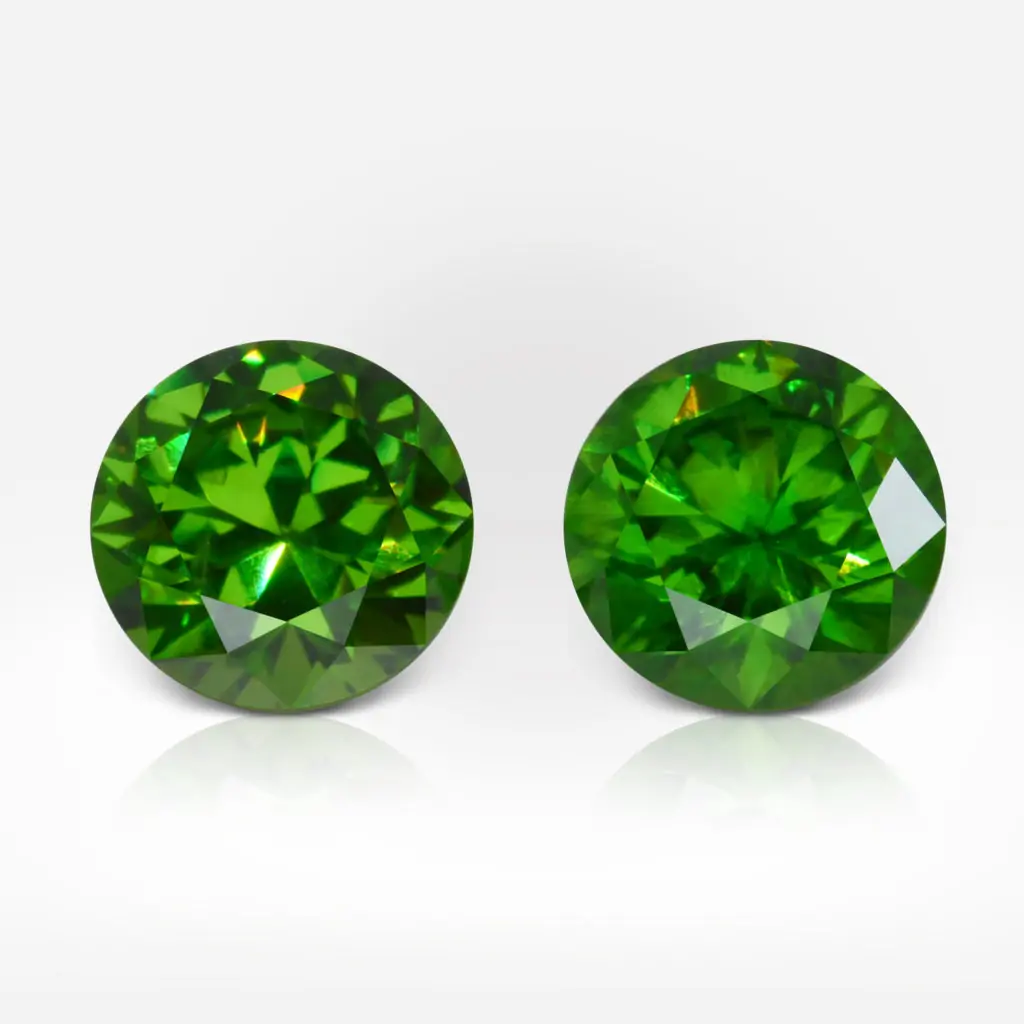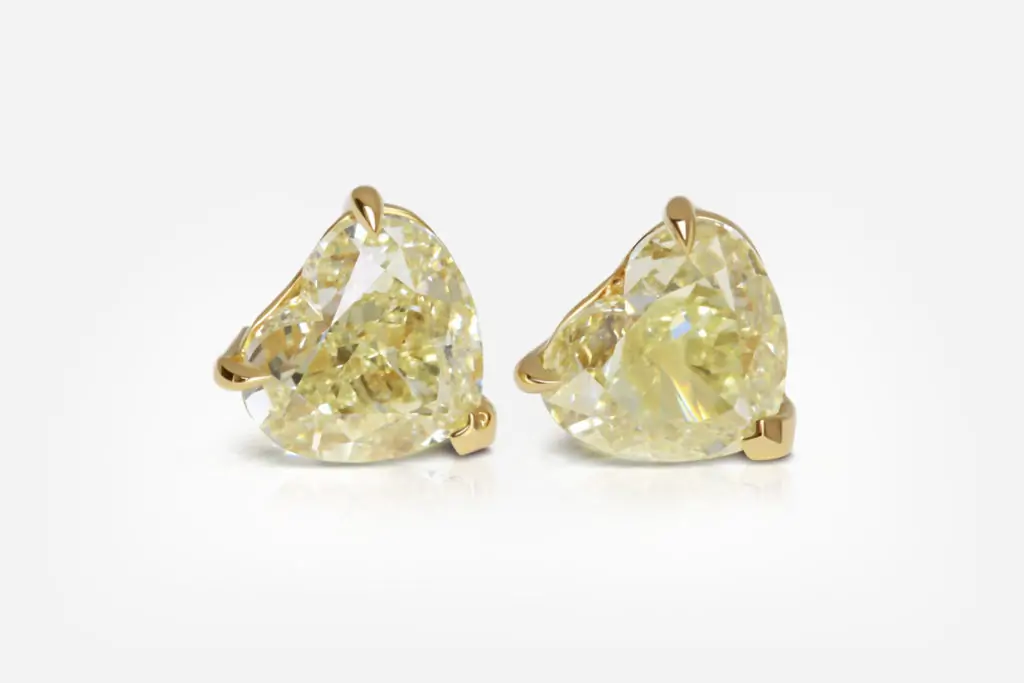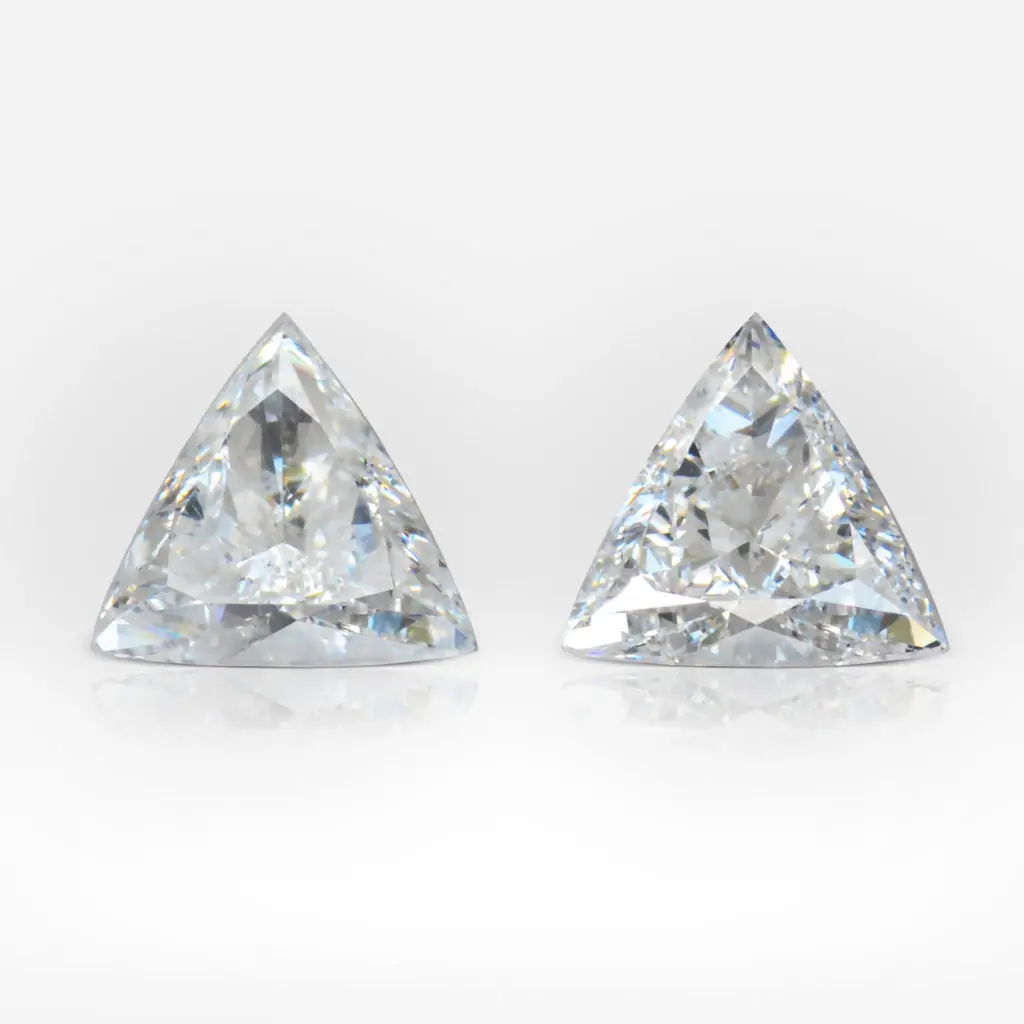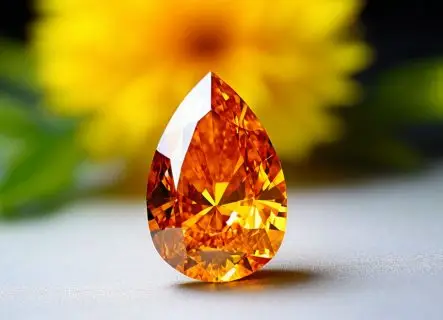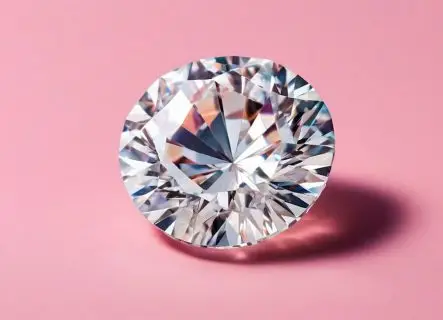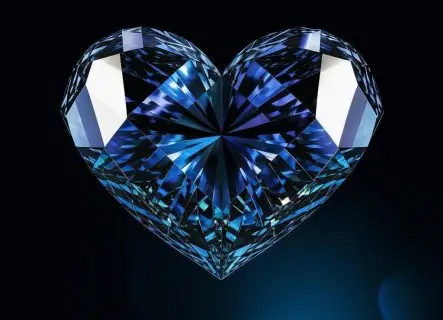Diamond stud earrings are an everlasting style staple. They remain fashionable over time and beautifully match any look – from casual to elegant.
Nonetheless, if this is your first time buying this type of jewelry or selecting diamonds for studs, you may have some questions. Possibly the main one will be – how do I determine the ideal diamond size for stud earrings? What should I focus on? How can I be sure I’ve made the right decision?
In this piece, we have addressed the most frequent questions and provided a straightforward, comprehendible guide on choosing diamond stud earrings.
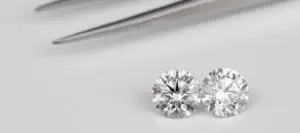
The first pitfall: CTW
When shopping for stud earrings, you’ll likely see the term CTW or some variation of it like CTTW or CT TW.
This stands for Carat Total Weight, which refers to the combined weight of all the diamonds in a piece of jewelry. So if you see a pair of stud earrings described as 1 CTW, that means each earring contains a 0.5 carat diamond, making the total diamond weight in the pair 1 carat.
While CTW provides helpful information on diamond quantity, be aware that it doesn’t tell you anything about diamond quality factors like cut, color, and clarity. The total carat weight alone doesn’t determine the value of the diamonds or the overall earrings. But it can be a useful starting point when comparing diamond stud options.
The second pitfall: quality
To begin, it is important to note that a stud earring’s large size does not necessarily indicate high quality. This key point is worth keeping in mind.
Rather, diamond quality is determined by the 4Cs: four characteristics that comprise a diamond’s value and cost.
These 4Cs are: color, which refers to the diamond’s hue; cut, or the diamond’s proportions and faceting; clarity, which describes internal flaws; and carat weight, or the diamond’s mass. We’ll briefly discuss each of these factors that make up a diamond’s quality.
Color
Diamonds come in a variety of colors, including white, blue, pink, yellow, green, brown, and, very infrequently, red. Due to their extreme rarity and uniqueness, blue and pink diamonds are valued highest. On the market, green diamonds are likewise incredibly uncommon. There is nothing that can be said about brown, orange, or yellow diamonds, respectively. These are now the most popular fancy colored diamonds. Vibrant, reasonably priced, and incredibly upbeat.
However, the most popular choice for earrings are white diamonds, which also have a huge number of shades. Therefore, we will focus a little more on their color shades.
A unique GIA Color Scale is used to identify the tint of a white diamond. The five categories on this scale are colorless (D-F), near colorless (G-J), faint (K-M), very light (N-R), and light (S-Z). The scale comprises 23 color grades (from D to Z).
The scale starts at letter D, which stands for “absolutely colorless,” and goes on to letter Z, which stands for “light yellow or brown,” as the presence of color increases. Consequently, the amount of color in a stone is defined by each letter. A stone is more valuable and costly the less color it contains. Consequently, the more color it has, the less expensive it is.
We have written in detail about each color grade in our previous articles. Read them to understand the features of diamonds’ color a little better.
Cut
A diamond’s cut is determined by its facets, which let light enter and reflect off of the stone, not by its shape. The ultimate beauty and worth of the stone are directly correlated with obtaining the best cut.
Round one is the shape most diamond jewelry is made of. The following forms are referred to as fancy ones: marquise, pear, oval, cushion, emerald, radiant, hear, triangle, and so on. It is important to consider the unique qualities of each shape while purchasing a stone.
Clarity
The presence and quantity of inclusions, flaws, and blemishes in the diamond are expressed through clarity. The GIA developed a Diamond Clarity Scale to provide a more exact description of clarity.
The highest clarity grades on the diamond clarity scale are Flawless (FL) and Internally Flawless (IF) stones. Due of their exceptional rarity and uniqueness, these stones are extraordinarily costly.
Then, with VVS1 and VVS2 degrees, comes the VVS (Very, Very Slightly Included) clarity level. VVS diamonds are nearly tough to spot, especially with the naked eye, due to their minuscule flaws.
With VS1 and VS2 degrees, the following level is called Very Slightly Included, or VS. This indicates that even though these diamonds have very few imperfections visible at 10x magnification, they are still considered minor.
The SI (Slightly Included) group follows, which also includes SI1 and SI2 degrees. Here, ten times magnification makes inclusions visible.
Lastly, the I (Included) category, which has degrees in I1, I2, and I3. Under a 10x magnification, these diamonds’ inclusions are visible, which may significantly reduce their transparency and brightness.
How to choose the size of stud earrings? Step-by-step guide
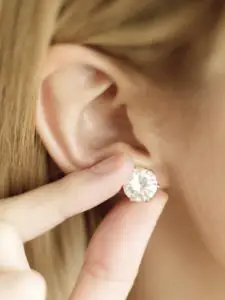


Understand where you will wear your stud earrings
To start, consider why you want the earring studs. Will you wear them daily or just for special events? Typically, earrings that weigh 0.5 to 1 carat are good for everyday wear. For special occasions, go with something larger and more eye-catching, usually 1 carat and up. Here, you’re limited only by your creativity – and budget, naturally.
Ultimately though, it depends on your personal style. Maybe 2 carat diamond studs will suit you perfectly for daily wear. There’s really no such thing as too much sparkle.
Decide on a budget
This is maybe one of the most critical things to remember. Ultimately, no matter what you decide to buy, your purchase will only be successful if you can afford it within your budget.
Decide which and what shape of diamond you want
After determining the budget and level of luxury for the earrings, take some time to consider the color and shape of the diamond. Round diamonds are the most common shape for stud earrings.
However, you have many options – you could choose oval, triangular, or cushion-shaped studs if you prefer. The important thing is to reflect on the diamond attributes that appeal most to you before finalizing your stud earring purchase.
Consider the most common weight of earrings
If you’re still having trouble deciding, you may want to consider classic earring styles.
Diamond studs ranging from 1 to 2 carats are a perennial favorite. However, your personal taste is what matters most.
Make a decision
Ultimately, there is no single “right” choice. Consider all the factors discussed above, and select what feels best for you. Don’t hesitate to seek expert guidance if you need help navigating the diamond market – they can easily point you in the right direction.
When making your final decision, remember that there are many good options. Focus on what fits your style and budget.
Subscribe to discover the world of diamonds and gems. If you have any questions, please let us know.


